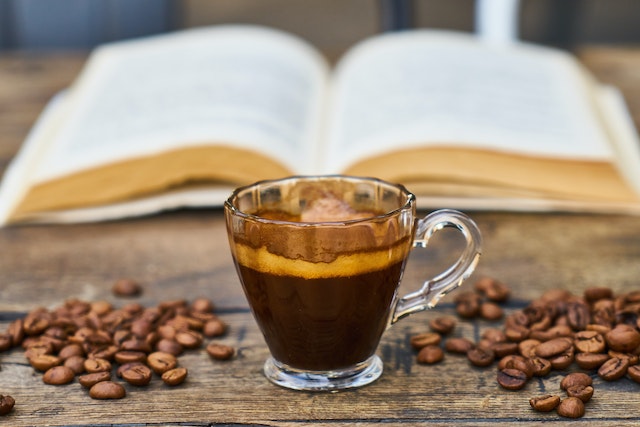If you’re a coffee lover, you know how disappointing it is to pour a shot of espresso only to see a thin, watery stream of coffee coming out of the portafilter. Watery espresso not only lacks the rich crema and full-bodied flavor that makes espresso so special, but it can also indicate a problem with your brewing technique.
Why is my espresso watery? Several factors can lead to watery espresso, including using the wrong grind size, too little coffee, uneven tamping, low water temperature, and low pressure.
In this blog post, we’ll explore the common causes of watery espresso and provide tips on how to fix the problem.
Factors Affecting Espresso Extraction:

Before we dive into the causes of watery espresso, it’s important to understand the factors that affect espresso extraction. These include:
- Grind Size: The size of coffee particles determines the rate of extraction. Finer grinds extract faster but can lead to over-extraction, while coarser grinds extract slower and can result in under-extraction.
- Dose: The amount of coffee used in each shot affects the strength and volume of the final extraction.
- Tamping: The level of compression applied to the coffee grounds affects the rate and uniformity of extraction.
- Water Temperature: Espresso machines typically extract around 200°F, as hotter water can lead to over-extraction and bitter flavors.
- Pressure: The amount of pressure used during extraction affects the rate and volume of coffee extraction.
Common Mistakes that Lead to Watery Espresso:
Now that we know the factors that affect espresso extraction let’s look at the common mistakes that can lead to watery espresso.
1. Grind Size
If the grind size is too coarse, the water will pass through the coffee too quickly, resulting in a watery shot. On the other hand, if the grind size is too fine, the water will have difficulty passing through the coffee, resulting in a slow extraction and potential over-extraction.
2. Dose
Using too little coffee can result in a watery shot while using too much coffee can result in a slow extraction and potential over-extraction.
3. Tamping
Uneven tamping or insufficient tamping pressure can result in uneven extraction and a watery shot.
4. Water Temperature
If the water temperature is too low, it can result in under-extraction and a watery shot. If the water temperature is too high, it can result in over-extraction and a bitter shot.
Tips for Improving Espresso Extraction and Consistency
Now that we’ve identified the common mistakes let’s look at some tips for improving espresso extraction and consistency.
- Grind Size: Adjust the grind size until you get a consistent extraction time of 25-30 seconds. A coarser grind will result in a faster extraction time, while a finer grind will result in a slower extraction time.
- Dose: Use a consistent dose for each shot, typically around 18-21 grams.
- Tamping: Use a level tamping surface and apply consistent pressure to ensure even extraction.
- Water Temperature: Use a thermometer to ensure the water temperature is around 200°F.
- Pressure: Check the pressure gauge on your machine and adjust as needed to ensure consistent pressure during extraction.
The Role of Equipment and Grind Size in Espresso Quality
The quality of your espresso is not only affected by the factors we’ve discussed but also by the quality of your equipment and the consistency of your grind size.
Investing in a high-quality espresso machine and grinder can improve your quality and consistency. Additionally, consistent grind size will ensure consistent extraction and better flavor.

Troubleshooting Techniques for Watery Espresso:
If you’ve followed the tips above and are still experiencing watery espresso, here are some troubleshooting techniques to try:
Check the water temperature
If you’re experiencing watery espresso, ensure the water temperature is around 200°F. If it’s too low, try preheating your machine, or check the heating element to ensure it’s functioning properly. If it’s too high, try reducing the temperature on your machine or waiting for the water to cool down before pulling your shot.
Adjust the grind size.
If you’ve already adjusted the grind size but are still experiencing watery espresso, try going one step finer or coarser and see if that improves your extraction.
Check your tamping
If you’re experiencing uneven extraction, check your tamping to ensure it’s level and consistent. Try using a tamper with a more comfortable handle or adjusting your tamping pressure.
Check your espresso machine.
If you’re still experiencing watery espresso, it could be an issue with your espresso machine. Ensure all parts, including the portafilter, shower screen, and group head, are clean and functioning correctly.
Frequently Asked Questions (FAQs)
How can I improve my espresso extraction?
Use the right grind size, dose, tamping pressure, water temperature, and pressure to improve your espresso extraction. Adjust these factors until you get a consistent extraction time of 25-30 seconds.
What is the ideal temperature for brewing espresso?
Espresso machines typically extract at around 200°F, as hotter water can lead to over-extraction and bitter flavors, while cooler water can lead to under-extraction and watery shots.
Can using low-quality equipment affect my espresso quality?
Yes, using low-quality equipment can significantly affect your espresso quality and consistency. Investing in a high-quality espresso machine and grinder can improve your shots and make your brewing process more enjoyable.
What should I do if I’m still experiencing watery espresso after following these tips?
If you’ve followed these tips and are still experiencing watery espresso, try troubleshooting your machine or seek advice from a professional barista. They can help you identify any issues with your equipment or technique and provide tailored solutions.
Conclusion
Watery espresso can be frustrating, but with the right techniques, you can improve your extraction and enjoy a delicious, full-bodied shot.
Remember to consider the factors that affect espresso extraction, including grind size, dose, tamping, water temperature, and pressure.
By using quality equipment, adjusting your technique, and troubleshooting any issues, you can improve the quality and consistency of your espresso shots. With practice and patience, you’ll be brewing the perfect espresso quickly!






